A good Chinese-English dictionary is something that will stay with you as long as you study Chinese. You will use dictionaries a lot for looking up definitions, examples, and making flashcards. I recommend using Reverso Context and one Chinese-English dictionary for most of your translation needs. The dictionary you choose to use will be the one that best suits your study methods.
PC/Mobile
Reverso Context
Reverso Context is a fantastic tool for learning a word’s meaning through context. Many words don’t translate one to one or are only used in specific circumstances. This is why you should never use a traditional dictionary to translate sentences directly. With Reverso Context, when you type in a word or phrase, it will give you a bunch of example sentences, so you can see how a word is used. This is very helpful when writing or making your own sentences in Chinese.

For example, I may be talking to a friend about work and want to say the sentence, “I’m tired of my job and ready to jump ship.” Since “jump ship” is an expression phrase, if I translated it directly into Chinese it would sound strange, and I wouldn’t be understood. If I look up “jump ship” in a standard dictionary, it would just give me the translation for “jump” and “ship” separately, but if I look it up on Reverso, I can look at the example sentences to see what would be the natural way to say that phrase in Chinese.

It turns out the native way to say “jump ship” in the context of the sentence I wanted to say is “跳槽” which means to change jobs or careers. Checking if you’re using words in the right context will make your Chinese sound better and more natural.

trainchinese
Trainchinese is a great beginner’s dictionary because it offers clear definitions, and it’s easy to use. It also offers lots of extra information about characters and words, as well as great example sentences.

You can look up a word in Chinese or English, and it will give you the word’s translation as well as all phrases and compound words that also use it.

When you click on a word, you can see the character, pinyin, and meaning.

For the hanzi, you can see the stroke order, character composition, as well as the radicals and their meanings.

The example sentences are really useful because they let you see how a word is used in context. Trainchinese provides sentence examples in both traditional and simplified Chinese with English translations, color-coded tones, and pinyin. They even take tone shifts into account for the coded tones and pinyin, which many other resources do not do.

To view a sentence in more detail and hear an audio recording, click on it. For help with each component of the sentence click on “get sentence breakdown.”

In the breakdown screen, you can view each word in the sentence separately to aid you with your comprehension.

PC
iCIBA
iCIBA is a simple-to-use Chinese-English dictionary for Chinese native speakers. For more advanced learners, using a dictionary such as this can be helpful for immersion as many translation explanations are in Chinese.

You can search for a word in either Chinese or English, and it will give you the translation along with phrases it’s used in and examples.

Android/IOS
Pleco – Freemium
I can’t make a list of Chinese-English dictionaries and not include Pleco. Pleco is the most popular dictionary app for studying Chinese. The app makes it easy to look up translations and learn new words. It also has a lot of useful add-ons you can purchase.
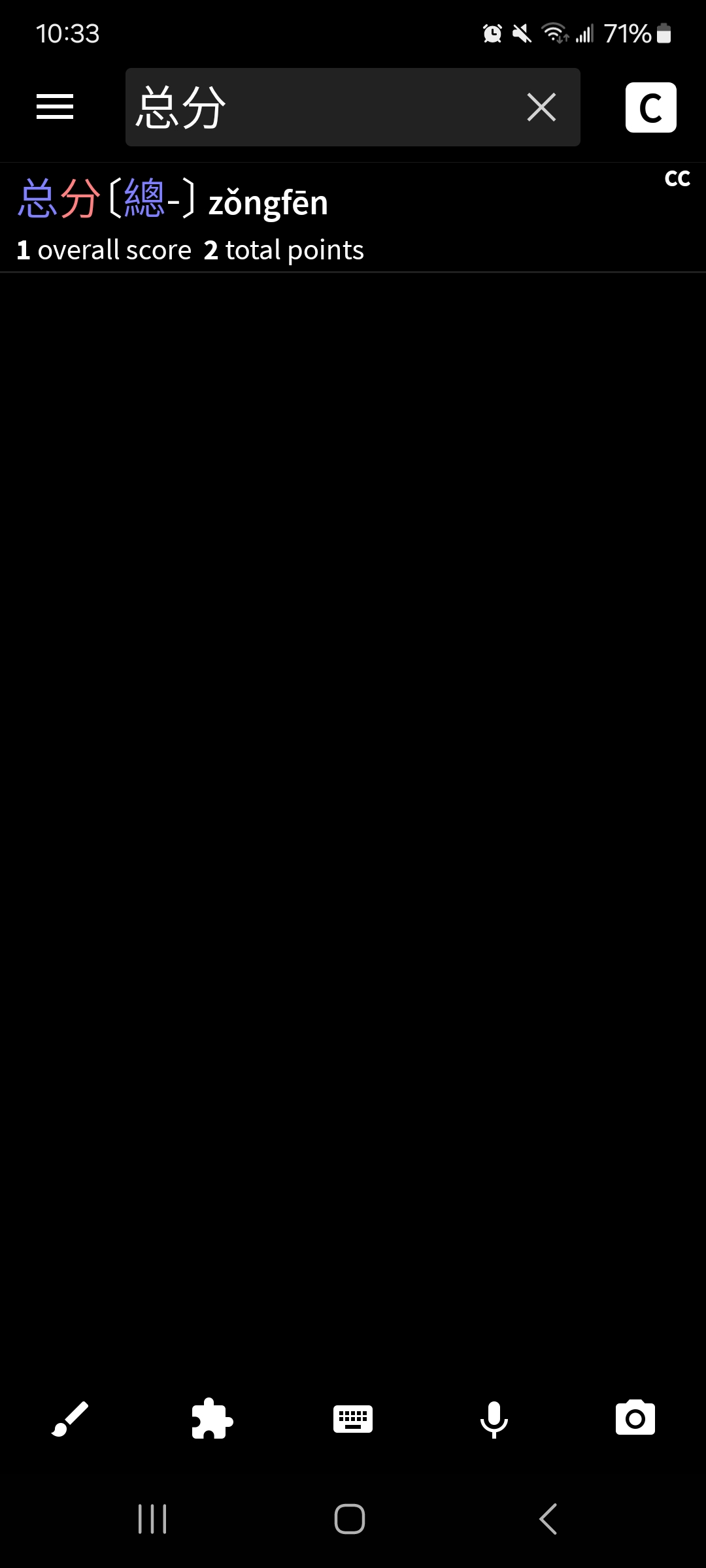
When you search for a word and click on it, Pleco will give you all of the word’s potential translations. You can also see additional information in the other tabs such as stroke order or character details. I use the sentences tab the most, as I like to see words in context.
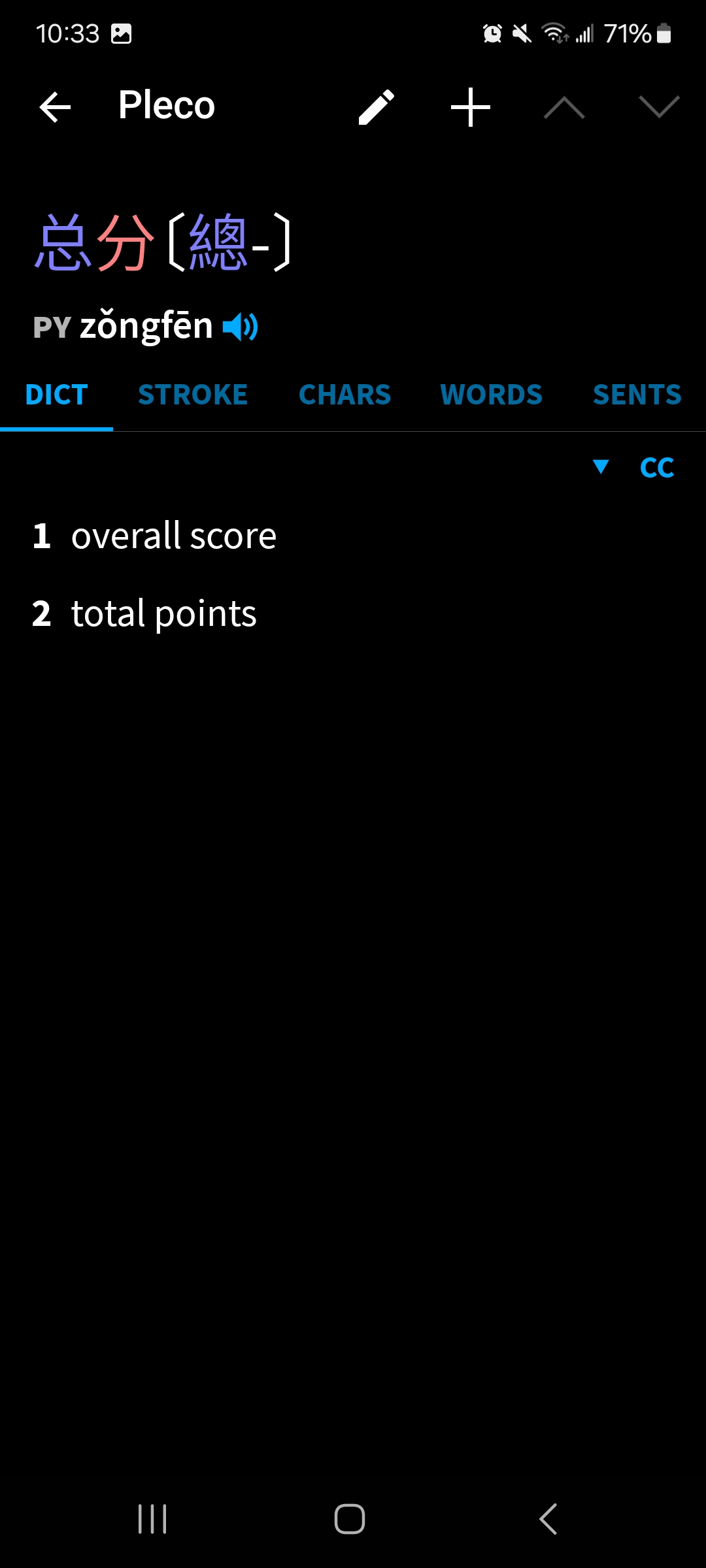
On the sentences tab, you can see examples of how the word is used in context.
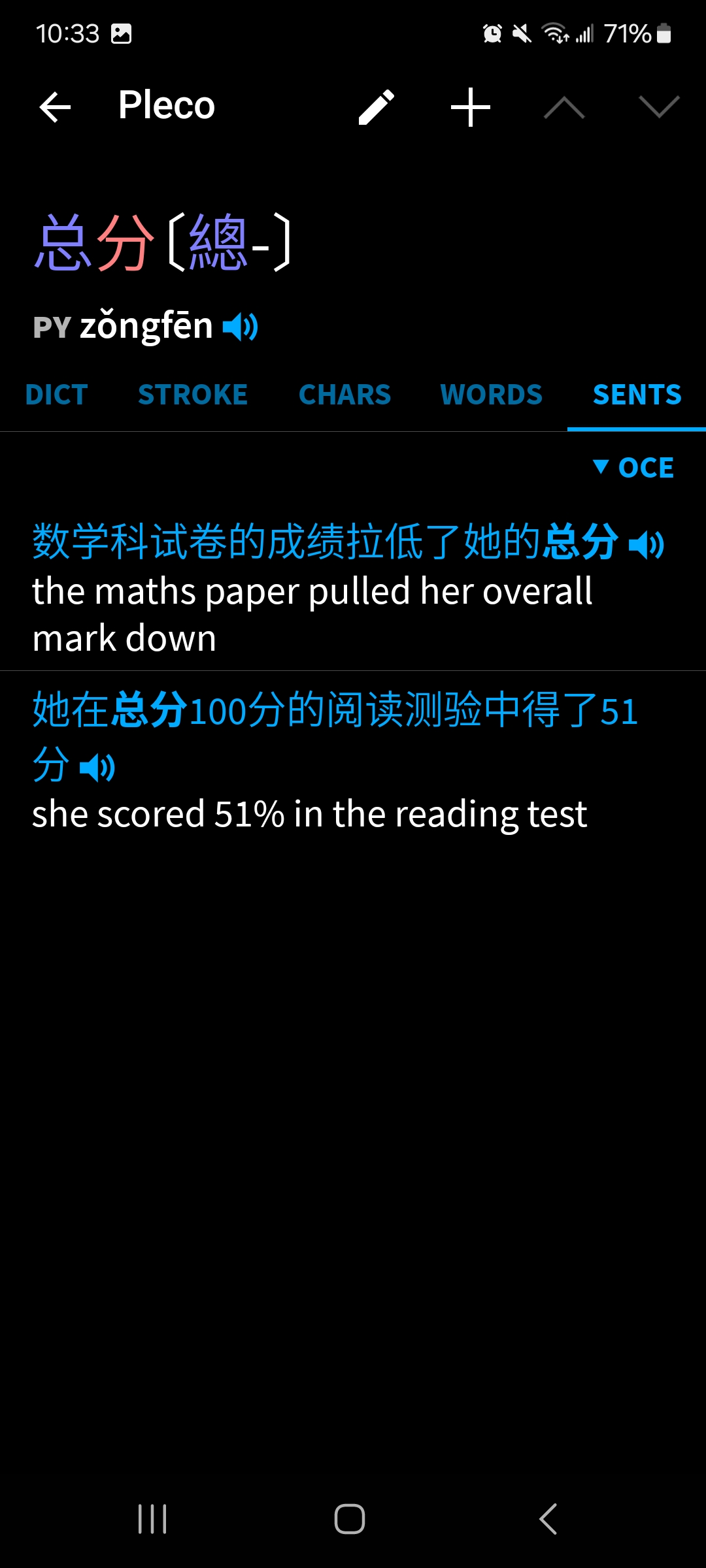
Useful add-ons such as flashcards, OCR, built-in reader, and handwriting can be purchased as a bundle in the “add-ons” tab for $30. However, unless you believe you would benefit from these add-ons, I don’t think you should purchase them. The most useful add-on is the built-in flashcard system, but Anki is free and a much more effective tool. It is better to have fewer high-quality flashcards, than more low-quality flashcards, and the quality of the flashcards in Pleco and its SRS system is not very good. If you are looking for good-quality Chinese flashcards check out the link below for premade decks. If those flashcards are too easy for you or you would like to make your own. I recommend using trainchinese for examples and definitions and making only 5-10 cards a day from key vocabulary you come across when reading. It doesn’t help to make a bunch of flashcards you’ll never study.
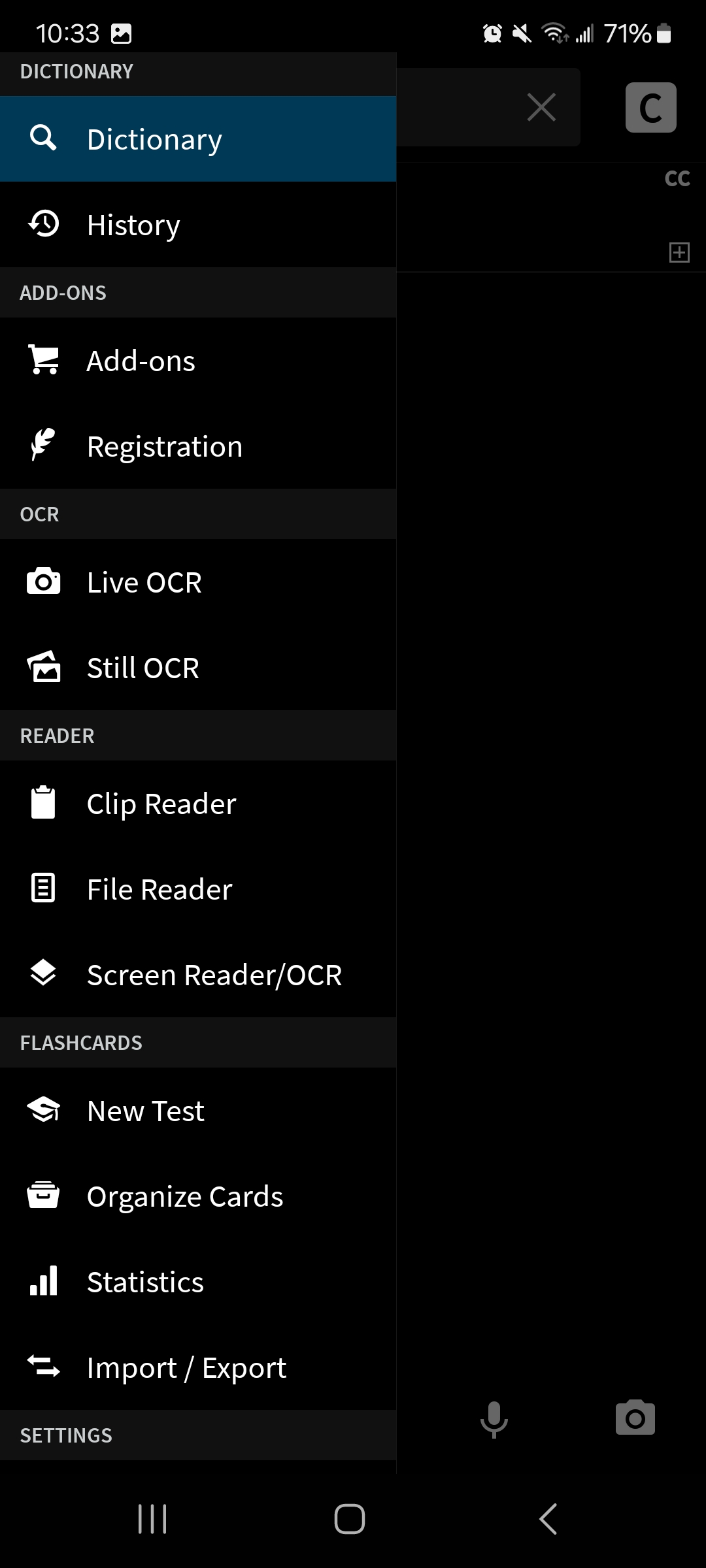
Android
Hanping Chinese
Hanping Chinese is similar to trainchinese with its ease of use and great example sentences.
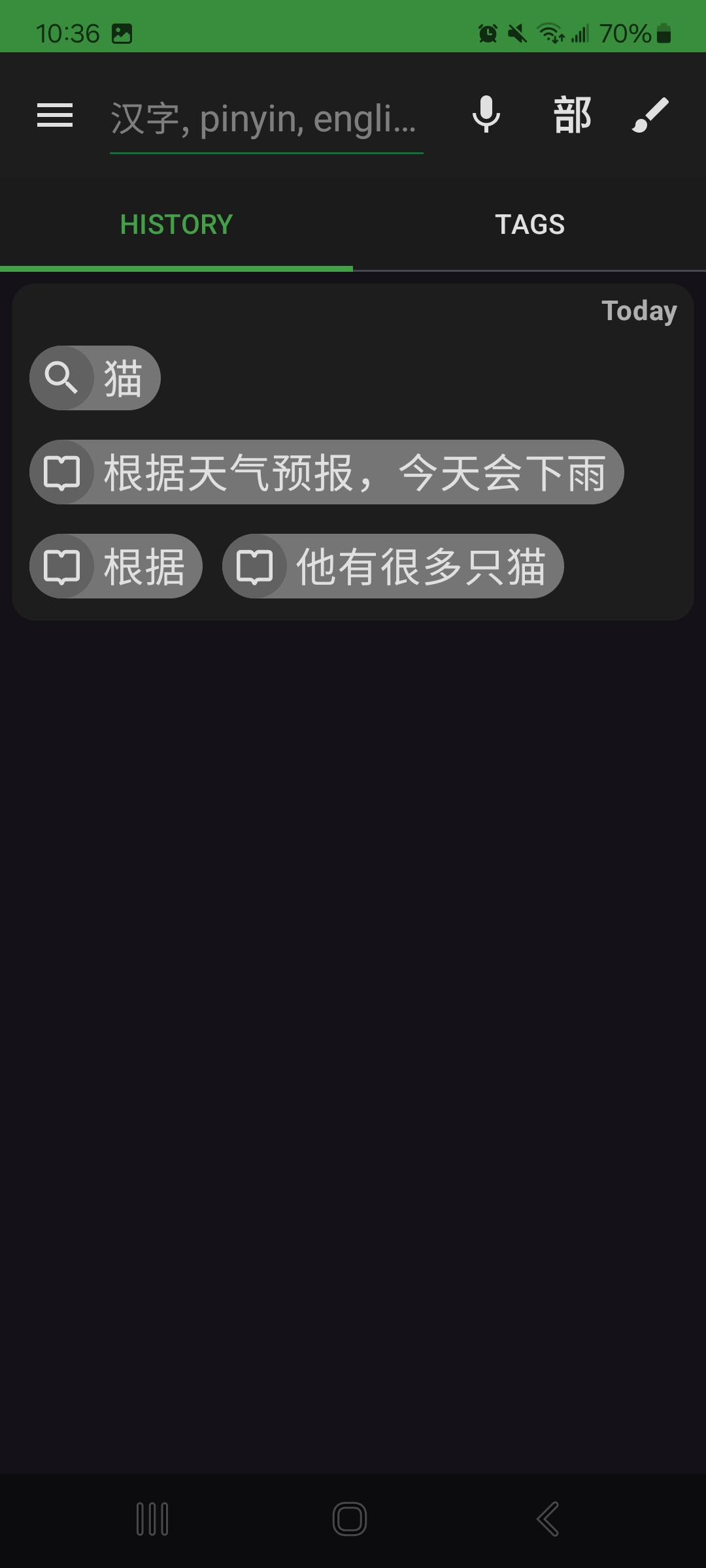
You can search for a word in Chinese, English, or Pinyin, and the app will provide you with a clear translation and example sentences.
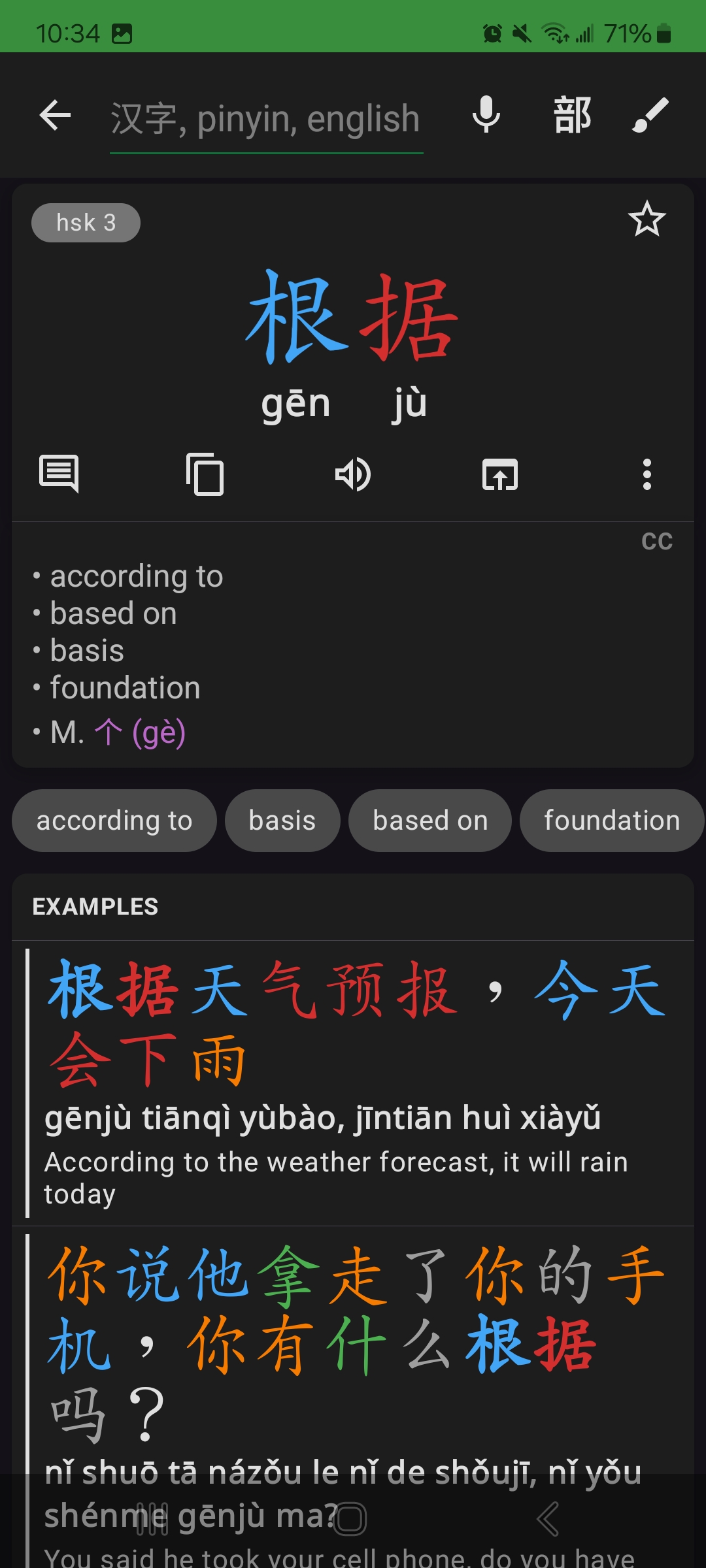
You can click on a sentence to view it in more detail or copy it.
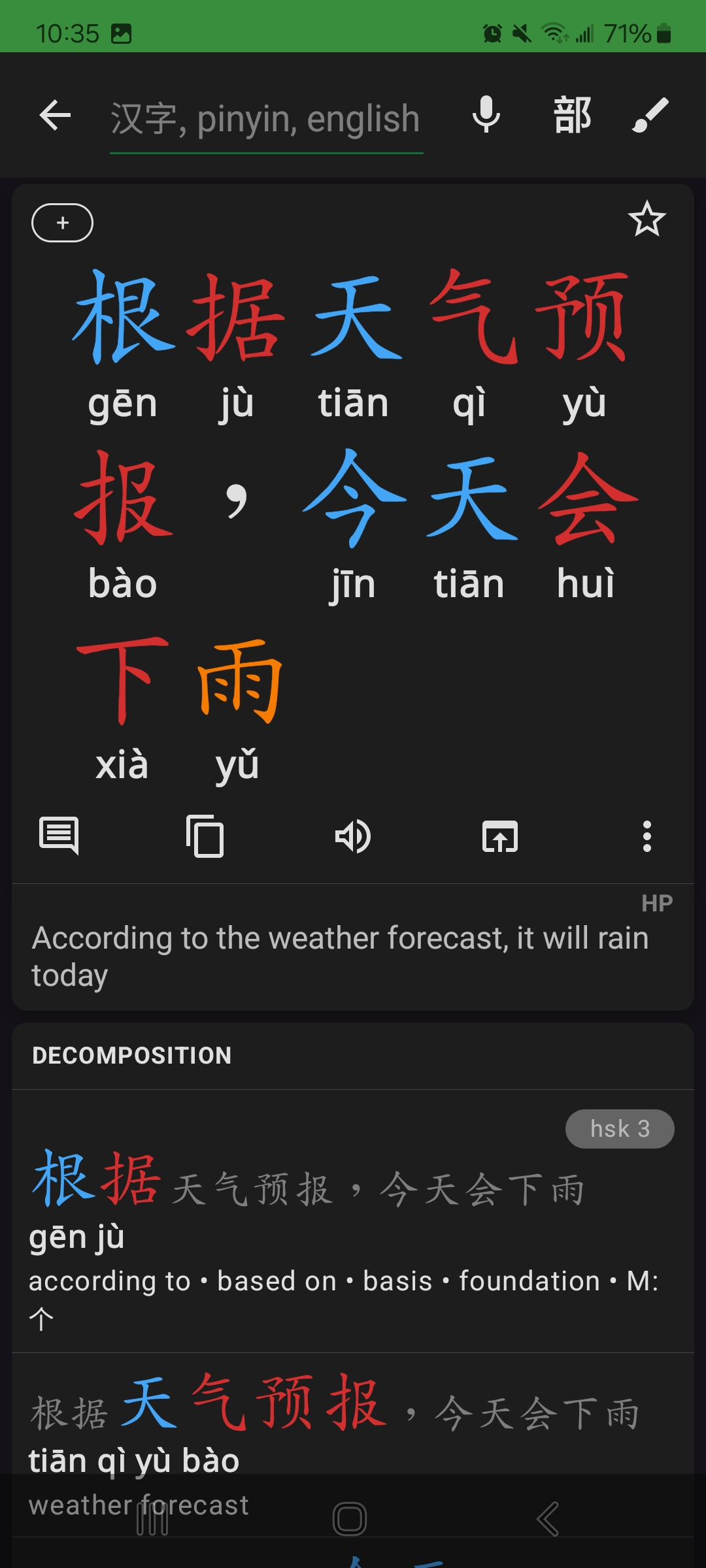
If you click on a character in the sentence, it will give you a breakdown of how it’s used in the sentence.

Hopefully, you found this article useful and were able to identify the right Chinese-English dictionary for you!






